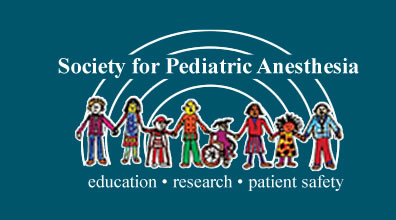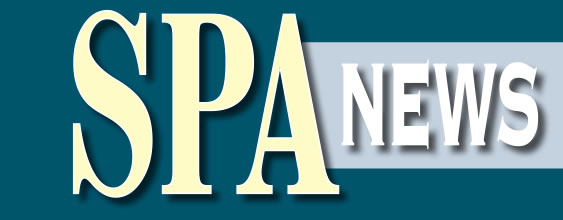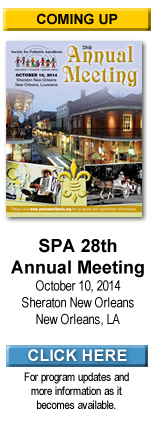With Spring Emerging, A Look Back on Pediatric Anesthesiolgy 2014
With winter behind us and spring emerging, this edition of SPA News contains comprehensive reviews of the recent SPA/AAP Pediatric Anesthesiology 2014 meeting held in Fort Lauderdale, FL. Meeting attendance was fantastic with over 900 delegates.
The Society for Pediatric Pain (SPPM) held a very successful inaugural meeting and the Congenital Cardiac Anesthesia Society (CCAS) 8th Annual meeting was equally well received and both are also reviewed. Congratulations to all the organizers for their excellent efforts! We should all be proud of the growth of SPA and the societies organized within SPA.
Something else which should be a source of pride to all is the international partnership that has lead to establishment of the University of Nairobi Pediatric Anesthesiology Fellowship. This fantastic collaboration is described in the newsletter and I encourage you to take a moment to read about this program that you, through SPA, have helped bring to fruition.
At my institution, safety is receiving a great deal of attention as we strive to become a high reliability organization (HRO). According to Weick and Sutcliffe in their book, Managing the Unexpected, HROs “…operate under very trying conditions all the time and yet manage to have fewer than their fair share of accidents”. Certainly, our patients expect us, first and foremost, to keep them safe, but too often they experience serious safety events such as medication or treatment errors, hospital acquired infections and treatment delays that lead to harm.
By establishing safety as a core value, we hope to create a highly reliable environment that delivers safe care. One tool we have learned that I’d like to share is STAR: Stop, Think Act, Review. As anesthesia providers, we work in a complex, often fast-paced environment with many potential distractions. Mental calculations and treatment decisions are made and acted upon quickly. This tool encourages individuals to pause for a moment, focus on the task at hand (is this the right drug in the right dose for this patient? Is there a contraindication to this medication I’ve not considered? Is it safe to proceed with anesthesia without xyz test result...), perform the task and then check for desired results.
A tool that facilitates stopping and resolving when there is uncertainty is QVV: Qualify, Validate, Verify. By qualifying, we ask “do I trust the source?”, validate involves answering the question “does it make sense to me?” and verify requires checking with an expert source.
Just this past week we avoided an inadvertent wrong sided regional anesthetic by using this tool. The laterality of the procedure seemed obvious to the providers in the room but as the surgical site was unmarked, the surgeon was contacted to confirm that the shared presumption was correct. As it turned out, everyone was wrong!
So, please consider incorporating these tools into your daily practice if you don’t already. Doing so will make a difference!



